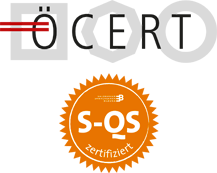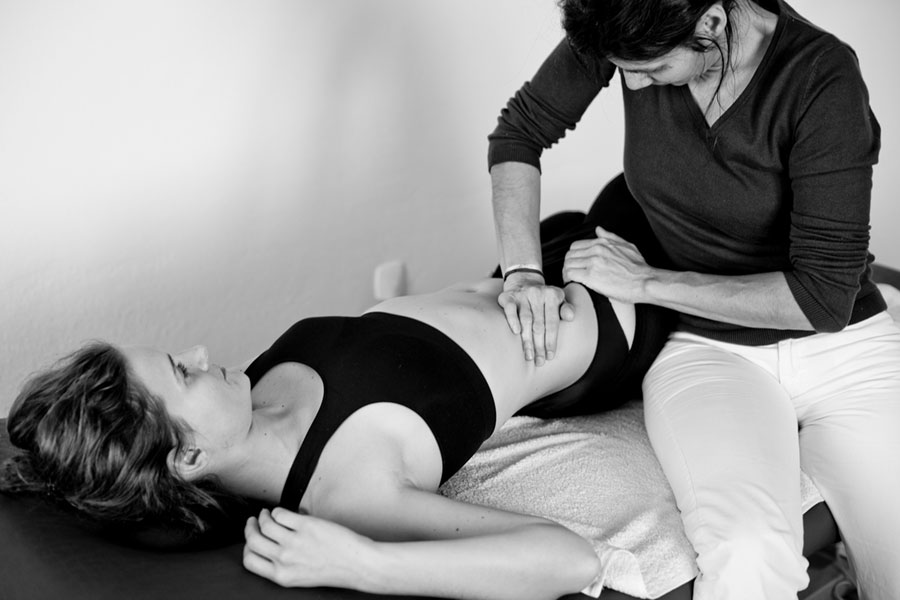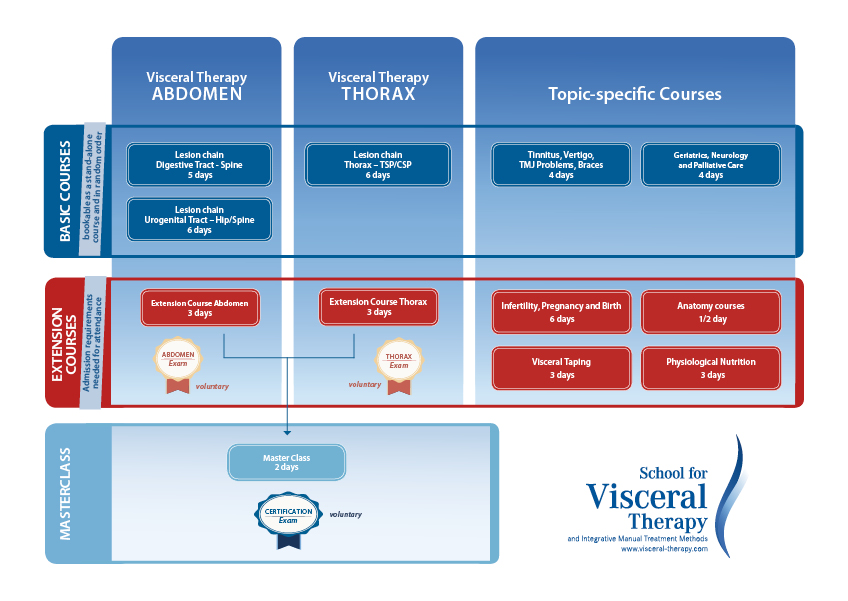Lesion chain Urogenital Tract – Hip/Spine
Dysfunctions of urogenital tract and interaction with musculoskeletal system.
Interaction of the sacrum, pelvic diaphragm, coccyx, discopathy, sliding vertebra (L5/S1), hyperlordosis, scoliotic thoracolumbar and lumbar deformity, hip and shoulder conditions in connection with the liver/gall bladder, pancreas, spleen, kidney, uterus and ovary.
Course content
Introduction
Introduction to the treatment concept of Visceral Therapy (anamnesis – diagnosis-sector treatment – lesion chains)
Theoretical part
- Didactic learning of the required theoretical background
- Anatomy, physiology, topography and pathological restriction pattern of the urogenital tract, liver/gall bladder, pancreas, spleen, kidney, uterus and ovary in interaction with the musculoskeletal system
- Basics of visceral anamnesis for the urogenital tract, liver/gall bladder, pancreas, spleen, kidney, uterus and ovary in correlation to orthopaedic diagnosis
- Diagnosis to verify the anamnesis and neurodynamic diagnosis
Treatment techniques and patient advice
- Practical learning of treatment techniques for different restrictions of the urogenital tract, liver/gall bladder, pancreas, spleen, kidney, uterus and ovary
- Working out lesion chains on topographic, physiological/functional, sympathetic or parasympathetic basis in connection to the urogentital tract and to orthopaedic symptoms: Interaction of the sacrum, pelvic diaphragm, coccyx, discopathy, sliding vertebra (L5/S1), hyperlordosis, scoliotic thoracolumbar and lumbar deformity, hip and shoulder conditions in connection with the liver/gall bladder, pancreas, spleen, kidney, uterus and ovary
- To learn active exercises for the different organs, which the patient can practice at home
- To learn to give the patient nutrition and behaviour advice based on nutrition physiology, metabolic processes and organ functions
- Psychosomatic which is based on physiology and pathology of the organ system, their deep meaning and how to work with the emotions by use therapeutic verbal dialogue
At the end of the course, participants will be able to apply the newly learned techniques in their daily practice.





